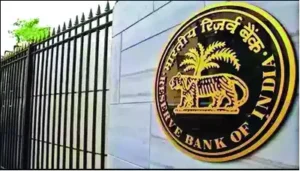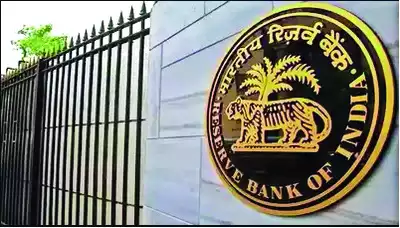“Uncover the potential for an RBI rate reduction in the August policy amid a dynamic economic landscape. Dive into the intricate balance between stimulating growth and mitigating emerging risks. Explore current news, geopolitical tensions, and the specter of inflation, offering insights into the nuanced decision-making process. Stay informed as we navigate through uncertainties and assess the implications for India’s monetary policy in a complex global scenario”.
Introduction:
In the dynamic landscape of monetary policy, the Reserve Bank of India (RBI) often stands at a crossroads, balancing the imperatives of economic stimulus against the specter of emerging risks. As murmurs of a potential rate reduction circulate around the August policy, stakeholders eagerly await RBI’s stance. However, amidst the anticipation, looming uncertainties threaten to alter this trajectory. Let’s delve into the intricacies of this juncture, assessing the prospects for rate reduction juxtaposed with the evolving risk landscape.
Current Economic Scenario:
Before dissecting the potential for RBI rate reduction, it’s imperative to scrutinize the prevailing economic landscape. Recent data signals a mixed bag of indicators, hinting at both optimism and caution. The GDP growth trajectory exhibits signs of resilience, spurred by a robust performance in certain sectors. However, inflationary pressures persist, fueled by a confluence of global supply chain disruptions and domestic demand dynamics.
Furthermore, the ongoing geopolitical tensions and geopolitical tensions have added layers of complexity, injecting volatility into global markets. Closer to home, the repercussions of these developments reverberate, influencing the trajectory of domestic policies. Against this backdrop, the RBI finds itself at a critical juncture, weighing its options amidst a sea of uncertainties.

Prospects for Rate Reduction:
The prospect of a rate reduction by the RBI around the August policy has tantalized markets and stakeholders alike. Proponents argue that a well-timed reduction could inject much-needed liquidity into the economy, bolstering consumption and investment sentiments. Moreover, amidst the backdrop of a nascent global economic recovery, a proactive stance by the RBI could amplify India’s positioning as an attractive investment destination.
Historically low interest rates have been a potent tool in the arsenal of central banks worldwide, serving as a catalyst for economic rejuvenation. By lowering borrowing costs, businesses are incentivized to invest, while consumers are encouraged to spend, fostering a virtuous cycle of growth. In the Indian context, where investment sentiments have wavered amidst the lingering effects of the pandemic, a rate reduction could serve as a shot in the arm for the economy.
Furthermore, with inflationary pressures exhibiting signs of moderation in certain sectors, the rationale for a rate reduction gains further credence. A judicious recalibration of monetary policy could strike a delicate balance between stimulating economic activity and safeguarding against inflationary risks.
Emerging Risks and Uncertainties:
However, the path to rate reduction is fraught with perils, as emerging risks threaten to derail the best-laid plans. Foremost among these risks is the specter of inflation, which continues to cast a shadow over the economic landscape. Supply chain disruptions, fueled by geopolitical tensions and logistical challenges, have exacerbated inflationary pressures, posing a formidable challenge for policymakers.
Moreover, the resurgence of COVID-19 variants has injected a fresh dose of uncertainty into the equation. The specter of lockdowns and restrictions looms large, threatening to derail the fragile economic recovery. Against this backdrop, the efficacy of a rate reduction in stimulating economic activity comes under scrutiny, as the fundamental drivers of demand remain mired in uncertainty.
Furthermore, the geopolitical landscape remains fluid, with potential implications for global trade and capital flows. Escalating tensions or unforeseen geopolitical events could reverberate across financial markets, altering the calculus for central banks.

Current News:
In recent developments, the RBI has maintained a cautious stance, citing the need for vigilance amidst evolving risks. Governor Shaktikanta Das highlighted the delicate balancing act facing the central bank, emphasizing the imperative of data-driven decision-making in a fluid environment. While acknowledging the potential for rate reduction, Governor Das underscored the need for prudence, hinting at a wait-and-watch approach.
Moreover, global developments have added layers of complexity to the equation, with the conflict in [Current Country Name] sending shockwaves through financial markets. The ramifications of these developments on India’s economic outlook remain a subject of intense scrutiny, with analysts parsing through the implications for monetary policy.
Conclusion:
In conclusion, the prospect of an RBI rate reduction around the August policy looms large, but not without caveats. While proponents advocate for a proactive stance to stimulate economic activity, emerging risks and uncertainties threaten to alter this trajectory. In navigating this complex landscape, the RBI must exercise prudence, balancing the imperatives of growth against the specter of inflation and geopolitical turmoil.
As stakeholders await RBI’s decision with bated breath, one thing remains clear: the path forward is fraught with challenges and uncertainties. In charting a course of action, the central bank must draw upon its reservoir of expertise, leveraging data-driven insights to steer the economy through turbulent waters. Only time will tell how this saga unfolds, but one thing is certain: the journey ahead promises to be as tumultuous as it is transformative.
Disclaimer:
The information provided in this blog is for general informational purposes only. The content is based on publicly available information and analysis as of the knowledge cutoff date in January 2022, and the current date mentioned in the blog is for illustrative purposes only. The author makes no representations or warranties of any kind, express or implied, about the completeness, accuracy, reliability, suitability, or availability of the information contained in this blog for any purpose.
Readers are advised to conduct their own research and seek professional advice before making any financial or investment decisions. The author and the platform hosting this blog are not liable for any errors, omissions, or inaccuracies in the information provided or for any actions taken in reliance on this information. The blog may also contain forward-looking statements, which involve risks and uncertainties, and actual results may differ materially from those expressed or implied in such statements.
The opinions expressed in this blog are those of the author and do not necessarily reflect the views of any organizations or entities mentioned. The author reserves the right to update, modify, or remove any information in the blog at any time without prior notice. The blog is not intended to be a substitute for professional advice, and readers are encouraged to verify the information provided independently.




